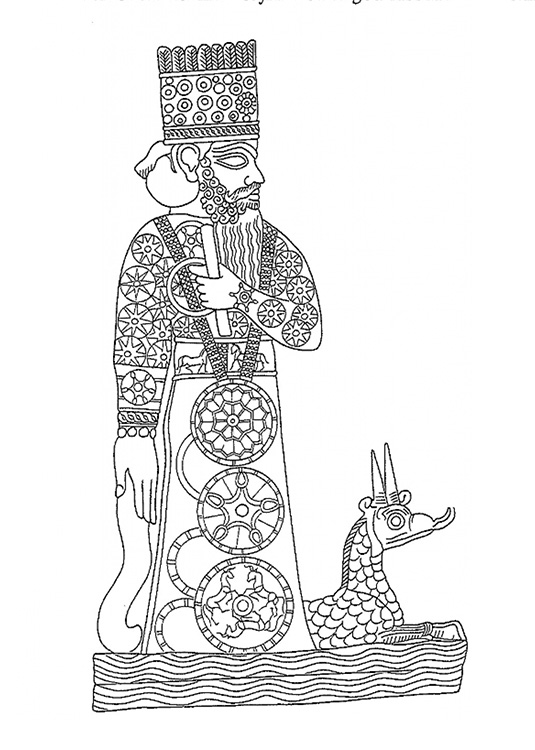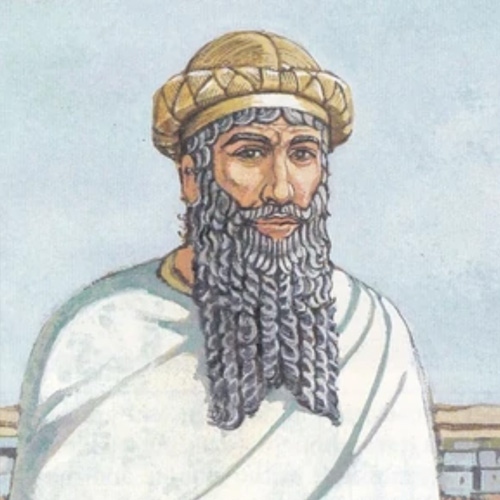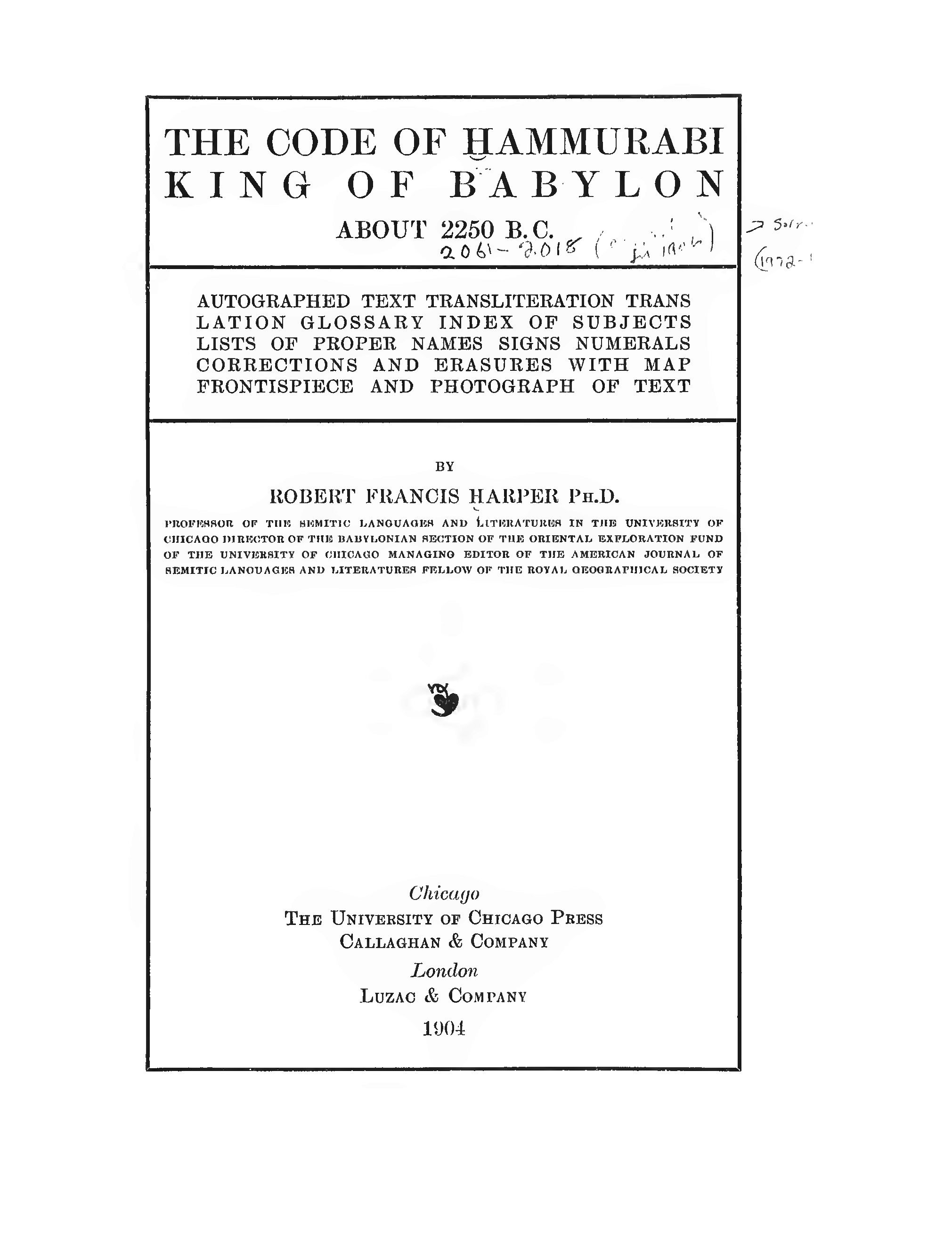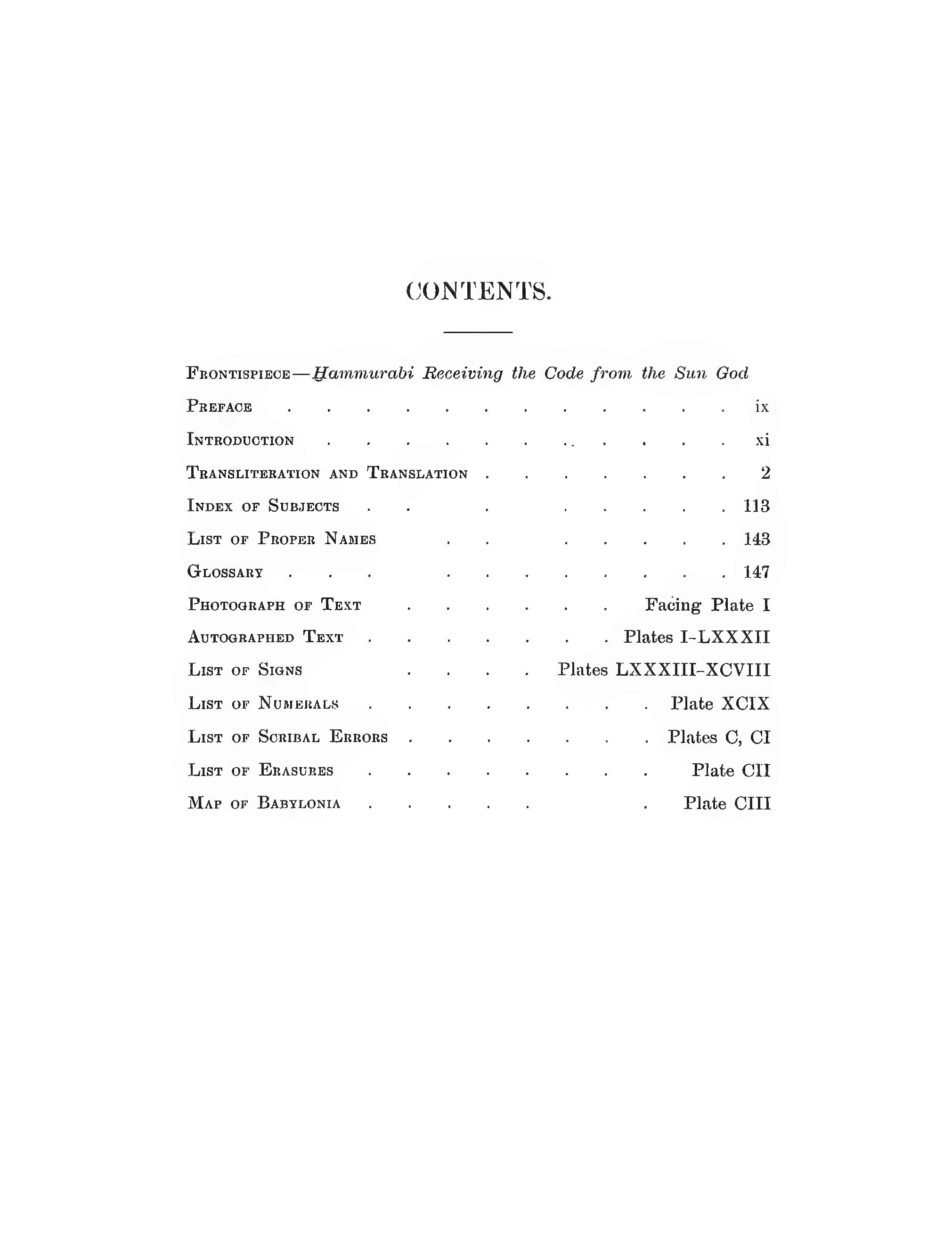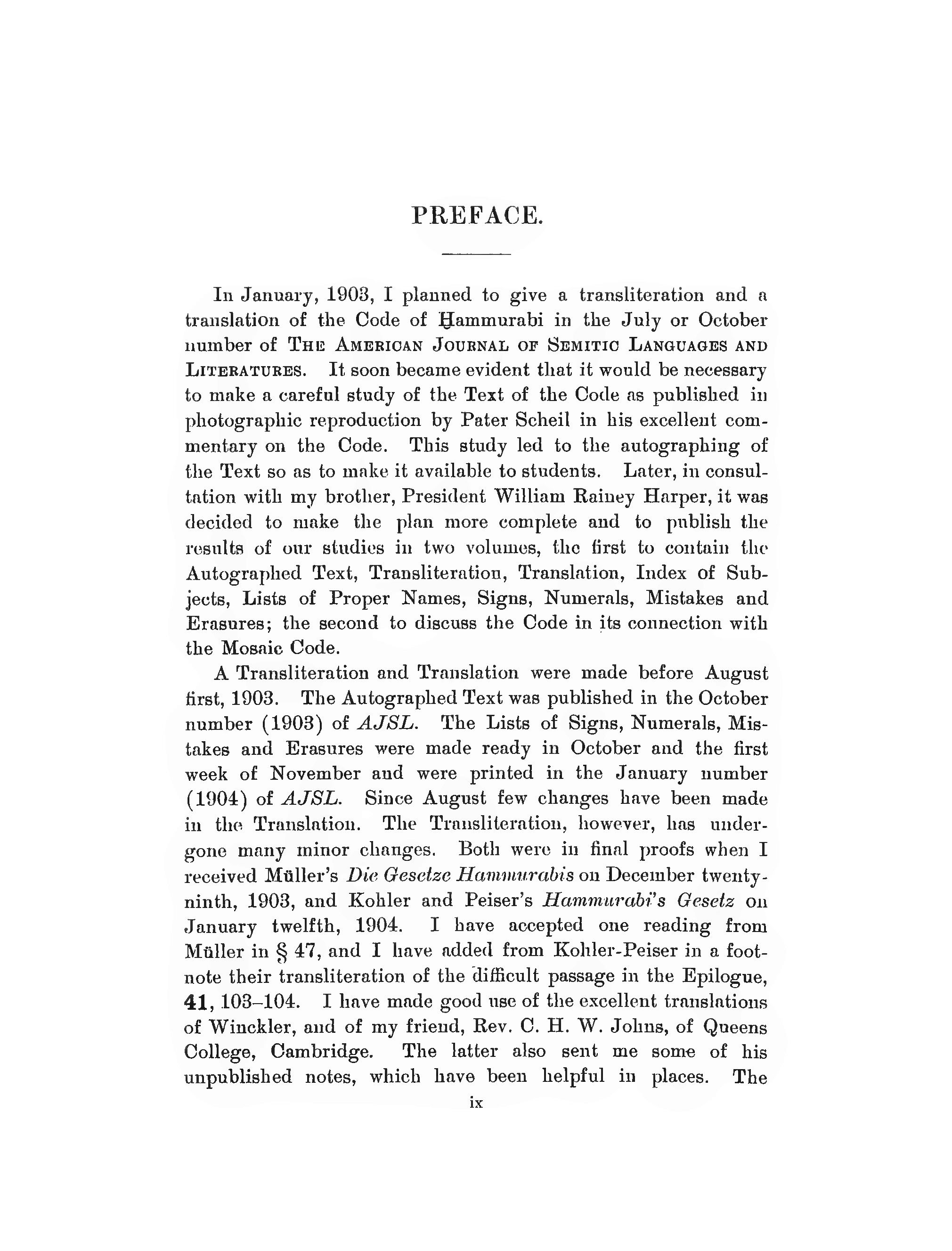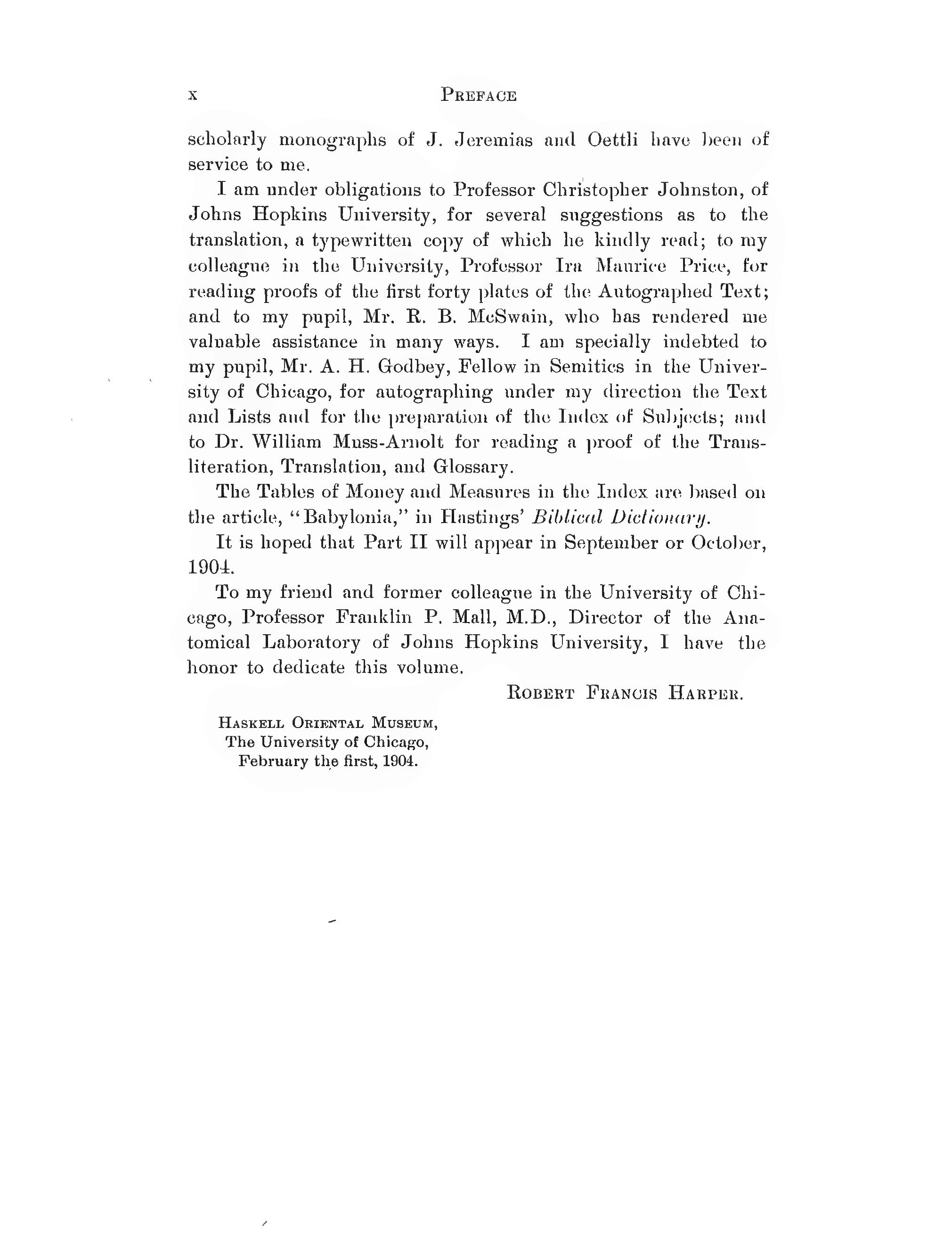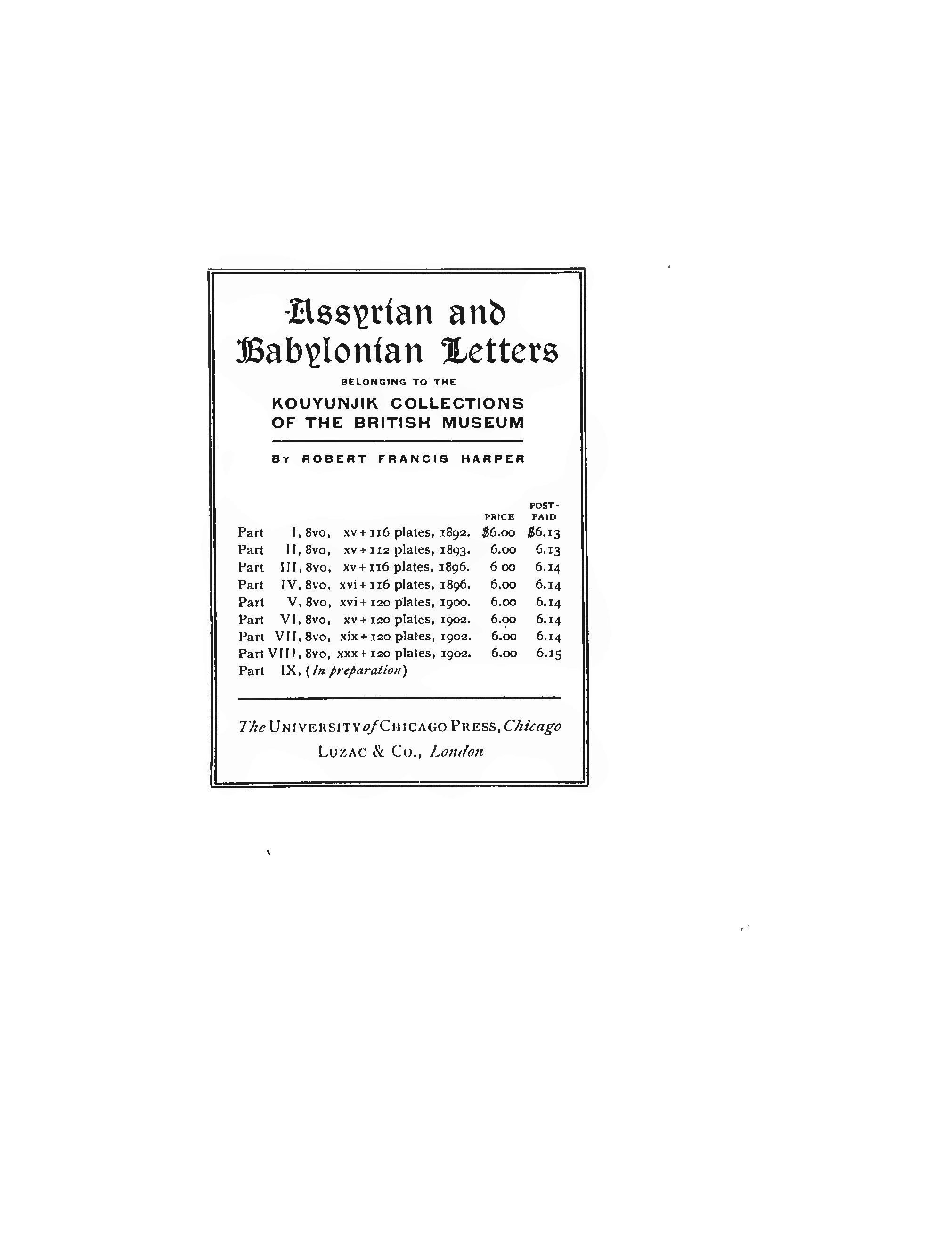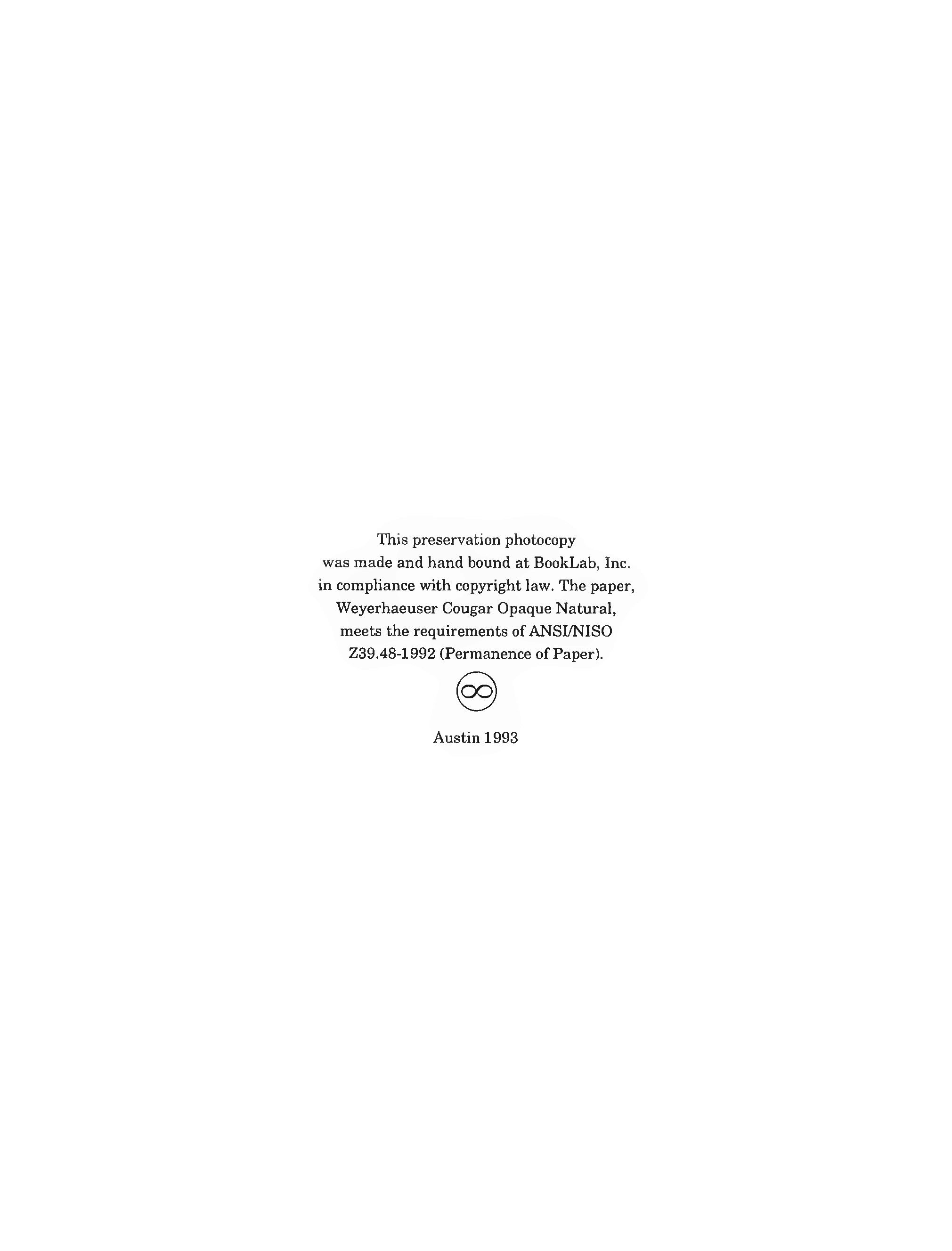About
The Code of Hammurabi is a 1904 translation of the Law Code of Hammurabi basalt stele, published by Robert Francis Harper. The printed book contains a translation, transliteration, and collection of plates which show the Akkadian cuneiform inscriptions. 282 laws are translated, as well as the prologue and epilogue.
Source: OMNIKA
Complete English translation with a running parallel transliteration of the original ideograms of The Code of Hammurabi, the longest surviving legal text from the Old Babylonian period The Code of Hammurabi is a collection of laws proscribed by Hammurabi, the sixth King of the First Dynasty of Babylon, and reigned from approximately 1792 BC to 1750 BC. These were inscribed on cuneiform tablets towards the end of his reign and discovered on the acropolis of Susa in 1901 by the Egyptologist Gustav Jéquier. The code consists of 282 case laws carved in forty-nine columns on a basalt stele. The code encompasses commercial, criminal and civil law. This edition contains a complete English translation of the code with a running parallel transliteration of the original ideograms. All corrections and erasures are included. This edition also includes facsimiles of all of the original cuneiform tablets, a thorough glossary and index of subjects, lists of proper names and tables of weights and currencies. Robert Francis Harper [1864-1914] was Professor of the Semitic Languages and Literatures in the University of Chicago, Director of the Babylonian Section of the Oriental Exploration Fund of the University of Chicago, Managing Editor of The American Journal of Semitic Languages and Literatures, and Fellow of the Royal Geographical Society. CONTENTS Frontispiece Preface Introduction Transliteration and Translation Index of Subjects List of Proper Names Glossary Photograph of Text Autographed Text List of Signs List of Numerals List of Scribal Errors List of Erasures Map of Babylonia
Source: Author or Publisher
expand_more Read more Read less
Access
Read for free
External sources
Primary
Myth
In the prologue, Hammurabi boasts about his intimacy with Marduk while giving him praise. Details about his own accomplishments are also pointed out, especially with respect to the enactment of justice in the world. Next, 282 laws are detailed. Many of them deal with divorce, taxes, medicine, theft, and familial matters. The famous phrase, "an eye for an eye," is also provided. The epilogue explains Hammurabi's authority as an arbiter of justice, as well as his divine authority.
Belief system

The Babylonian religion was practiced throughout modern-day Iraq and the general near east (Mesopotamia) during antiquity. Its chief deity was Marduk.
Translation
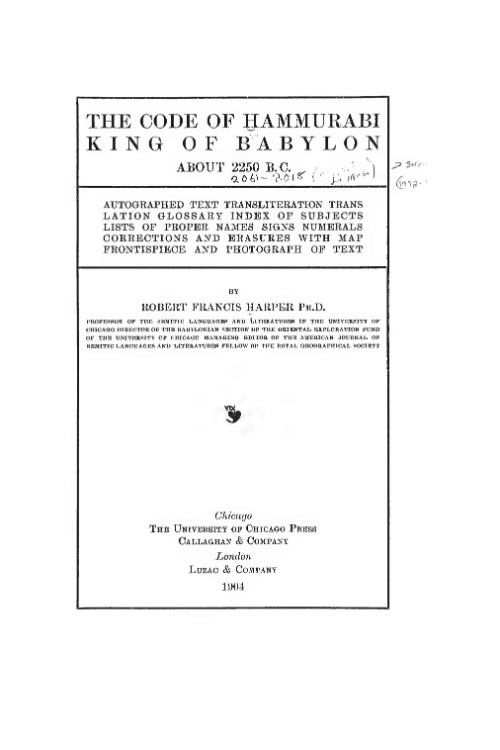
"Hammurabi's Code" is a composite English translation of the Law Code of Hammurabi by Robert F. Harper in 1902. It includes the Epilogue, the 282 listed laws, and the Prologue. The general publications also includes autographed plates with the cuneiform inscriptions.
Myths cited
It looks like only the main myth was referenced in this work.
Belief systems cited
Primary
Basalt Stele (Monument)

The title primarily deals with this artifact.
Artifacts cited
It looks like only the main artifact was referenced in this work.
Library works
Website · 2021
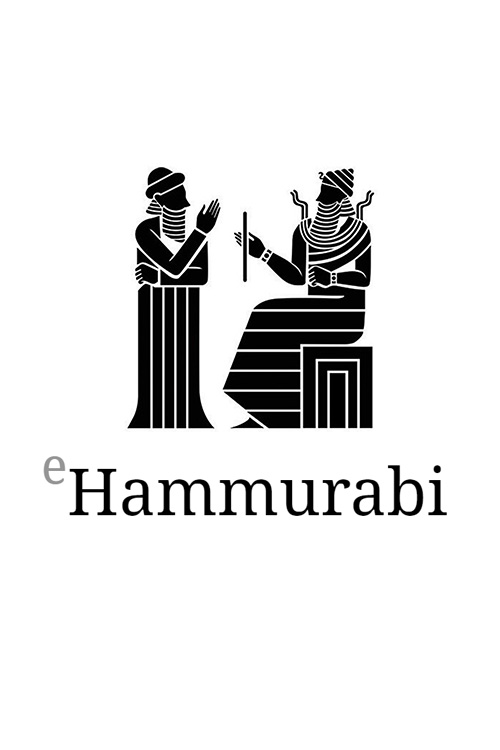
The Electronic Hammurbi website provides a digital version of the Law Code of Hammurabi; and includes the cuneiform signs, transliteration, normalization into Akkadian (Old Babylonian), and an English translation derived chiefly from Huehnergard's standard Akkadian grammar. The website was created by Boban Dedović on February 2021 while he was studying Mesopotamian Law at the University of Chicago, and is operated by the OMNIKA Foundation, a 501(c)(3) nonprofit based in Las Vegas, NV.
Contributor
Cite this work
ChicagoHammurabi. The Code of Hammurabi, King of Babylon, about 2250 B.C.: Autographed Text, Transliteration, Translation, Glossary, Index of Subjects, Lists of Proper Names, Signs, Numerals, Corrections and Erasures, with Map, Frontispiece and Photograph of Text. Translated by Robert F. Harper. Chicago, IL: University of Chicago Press, Callaghan, 1904.
